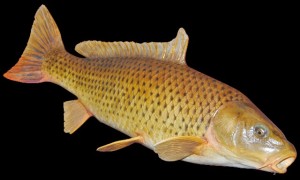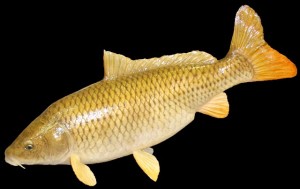from my article on FishExplorer.COM
Recently I was talking to colleague of mine who is an avid hunter. The topic of conversation drifted, as it usually does, to the merits of catch and release fishing. This is often a great debate. On one side is the desire of the “trophy” hunter to preserve his glorious catch forever. On the other, the conscientious angler, who advocates for preserving the ever diminishing trophy fish resources the future.
As you can imagine, it was not a dull conversation!
One topic we did at least agree upon was that over the past few decades the fish taxidermy industry has changed significantly. Fiberglass technology now means there is no longer a need for a trophy fish capture to be kept to create a lifelike replica at a later date. A reproduction can be created from but a photograph or detailed description. Ironically this was a topic I had been researching having recently stumbled across some very lifelike photographs of fish replicas online and reading a few other forum posts.
There does appear to be some common problems that occur with the traditional “skin mount” fish reproductions, especially with regard to their longevity over time. Some of these issues are reported as shrinkage of the skin, discoloration of the paint, brittle fins that snap or fall off, lifting and peeling of scales, nefarious odor and finally in the worst cases, degradation of the product to where it appears more akin to a decaying “zombie” than your once remembered prized trophy fish!
A fiberglass reproduction in theory should be far more durable, able to withstand hot, cold, humid and dry climates and should never shrink or deteriorate. The paintwork should not fade and be easy to maintain and clean. The cost of the final reproduction appears to be comparable with the traditional taxidermy “skin mount”.
Fiberglass replicas are made from a cast taken from a base mold. This is then finished and painted. There are mass market molds, and fully finished replicas available, for a multitude of given species and sizes, both saltwater and freshwater. However these mass market replica’s will not be your actual trophy individual fish, they are but a representation of the species, size and sometimes sex. For the angler who desires that true to life reproduction of their own capture then custom replicas can be made.
A taxidermist creates a mold specifically to resemble your actual fish, down to the texture of skin, scales, fins and final pose. This is a very time consuming and difficult task and only a skilled taxidermist will be able to provide the quality of work required. To produce the custom replica you will be asked to provide a photograph of the fish and a description. The more accurate the photo the better the reproduction, take pictures of the fish in three sections, from tail to mid-section, full mid-section and mid-section to head. Custom molds and finishing obviously cost far more than an off-the-shelf product. The labor, artistic skill and time required is considerable but the final result will be a replica that truly resembles your capture and will be worthy of that “trophy” mount.
In general, to form the replica, the custom mold is first thoroughly cleaned, then brushed with wax, to prevent any sticking. Gelcoat and fiberglass are applied to each section. A thick bead of fiberglass resin putty is pasted around the perimeter of each mold cavity. The mold is closed and clamped together. Once the putty has set the mold is opened to reveal the unfinished blank. The mouth section is cut open and expanding foam poured inside. Once dried the foam provides the base upon which to later sculpt and form fishes mouth.
Excess casting material is removed, seam lines sanded and the blank is sculpted to give the fish that perfect shape and lines. Glass eyes, fins and teeth are attached. The unfinished replica is given a coat of primer then a white base coat. It is then given the final paint job. It takes a true artist to apply the intricate details that pick up the colors, deep detail and highlights that make the finished replica appear so lifelike. Once pained the replica is given a protective polyurethane coat and the final work is ready to be displayed.
Each finished replica is a real work of art. There can be huge variances in the look of the final product. A high quality piece could appear more lifelike than a skin mount, whereas a lower quality product would look no better than a painted piece of plastic! The single most important part of the process is the final painting and the skill of the artist.
Though I would not personally want a replica of “CarpZilla” hanging in my family room I do highly respect and appreciate the true artistry into producing these amazing reproductions. Replicas are one alternative for the trophy hunter to view their prized capture, mounted and displayed on a shelf in their home and still promote sustainable catch and release fishing. Replicas may not be for everyone but they should at least be considered when you are holding that trophy capture in your hands and imagining it upon the shelf at home.
If you are interested in having a replica made for your trophy capture it would be worth investing the time in researching the taxidermist and artist first. Custom replicas are not cheap so ask to see some examples of their finished products, especially of the species you want reproducing.
For the more financially frugal inclined, there is always another option.
A camera, an enlarged photograph, a nice wooden frame. Also sits nicely upon the mantle!
I have included a couple of examples of carp replicas to demonstrate just what is possible.
I would like to thank Replica’s Inc. (www.fishreplicasinc.com), based here in Colorado, for their permission to include the photographs of some of their replicas and for their support of catch and release fishing. From their website, they simply state :-
Can I get my actual fish mounted instead of getting a fish replica?
While there are people out there who will taxidermy your actual fish, we no longer offer that service. We feel that the advantages of the fish replica outweigh any reason to mount the actual fish. One of the major benefits of a fish replica are that it will last forever, there is no shrinkage over time so you don’t end up with a piece of “fish jerky” on your wall. We encourage catch and release when at all possible, so the fish replica allows a fisherman to still enjoy the trophy.
Let us all hope more anglers start to practice catch & release fishing in the future!
Tight-Lines
John


